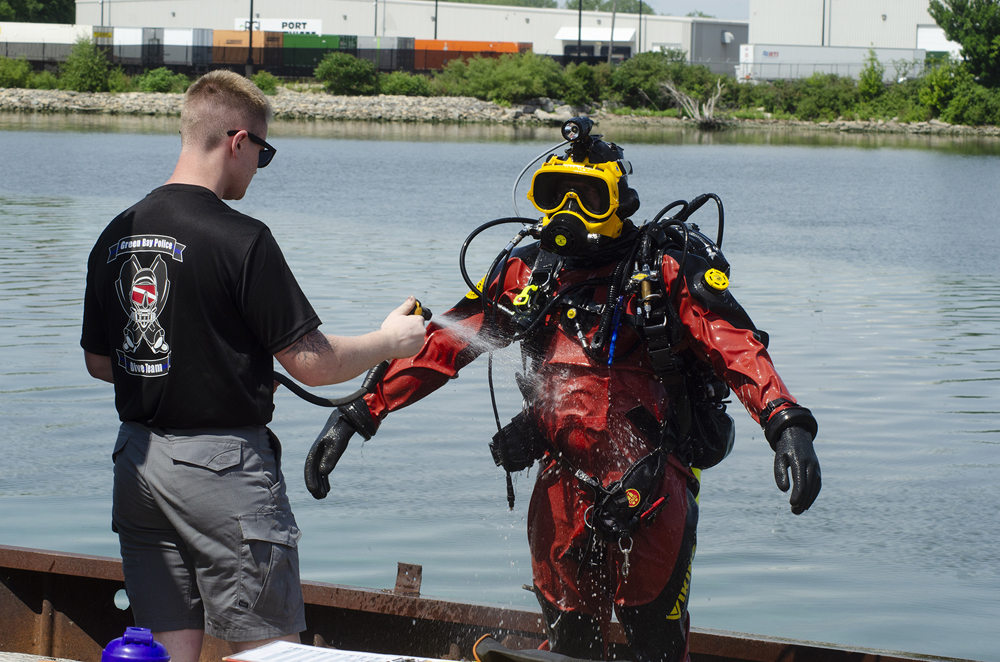
By Rick Cohler
Contributing Writer
GREEN BAY – The Green Bay Police Department’s Dive Team recently exhibited the procedure for recovering a vehicle from the Fox River, during a demonstration held July 13 at the docks near Zeller’s Ski & Sports.
Lieutenant Steve Mahoney, who leads the team, told reporters each recovery operation faces challenges of current, pollution and temperature, but the biggest challenge in the Fox River is visibility.
Divers can barely see a few inches in front of them in the murky depths.
The Dive Team drills every month. During the winter, they dive in lakes or quarries.
“We cut a giant hole in the ice and we send our divers under the ice,” Mahoney said. “The team is usually deployed three to four times a year. If it’s under the water we’ll retrieve it. If it’s on the surface, the Green Bay Fire Department will handle it.” Mahoney said they tend to get the most calls in early winter and early spring when people don’t realize how thin the ice may be.
They also recover bodies of people who have fallen or jumped into local waters.
The unit will also travel to anywhere in Wisconsin to help, if needed.
Mahoney explained that they had funding from a grant that allows them to help smaller jurisdictions that do not have resources.
For the demonstration, a car was allowed to coast into the river where it then floated out and sank in about 25 feet of water.
Prior to the exercise, all the fluids were drained from the vehicle so that it would not pollute the river.
The dive team then placed large air bags under the vehicle to float it to the surface where a line could be attached to pull it to shore.
Divers suit up in “dry” suits which completely protects them from contact with the water and keeps them warm.
When they return to shore they are hosed down to remove any contaminants from their suit.
On shore, each diver has a crew member to help with their support line which carries oxygen and communications.
More support comes from a unit which is also equipped with sonar to help guide the divers to their target.
Even with the aid of sonar, Mahoney said they often find their goal by physically bumping into it.
He said it would be like going into an unfamiliar old house, turning off all the lights and being asked to find an object all by feel.
“The tender is just as important as the diver,” Mahoney said. “They’re the ones watching the bubbles. They get to know their divers and can tell if it appears the diver may be having trouble, so our tenders go through a lot of training as well.”
If communication goes out, the tender will communicate through a series of line pulls.
If the diver loses oxygen they can resort to their air tank.
The tender also evaluates the diver before he goes in and upon exit to be sure there are no problems with nitrogen in the blood or “the bends.”
If the dive is deep, divers stop and wait at intervals on their way to the surface to prevent bends.
The unit always rotates divers.
“We’ll never have a diver come up even at 20 feet deep and put him right back in,” Mahoney said. “We’ll give him a break so the nitrogen in his blood can dissipate before we put him back in. You can have an experienced diver and he could have dove 50 times, but on the 51st it could kick in.”
If the diver is experiencing problems he is immediately rushed to the nearest decompression chamber, which is at St. Elizabeth Hospital in Appleton.
The dive team has 10 divers and five tenders who have other duties in the police department.
